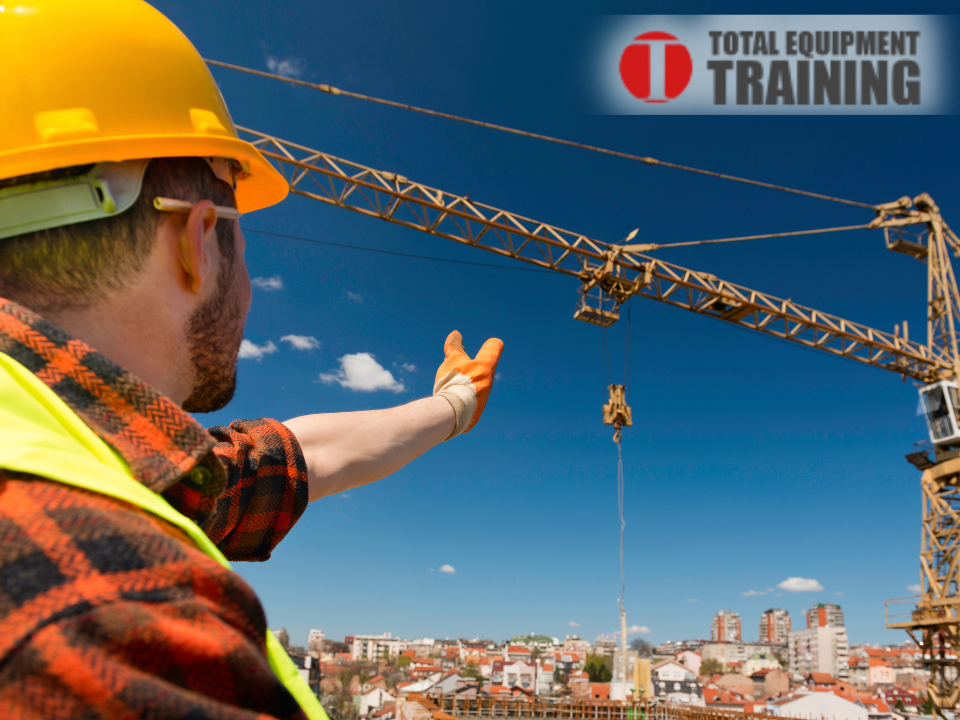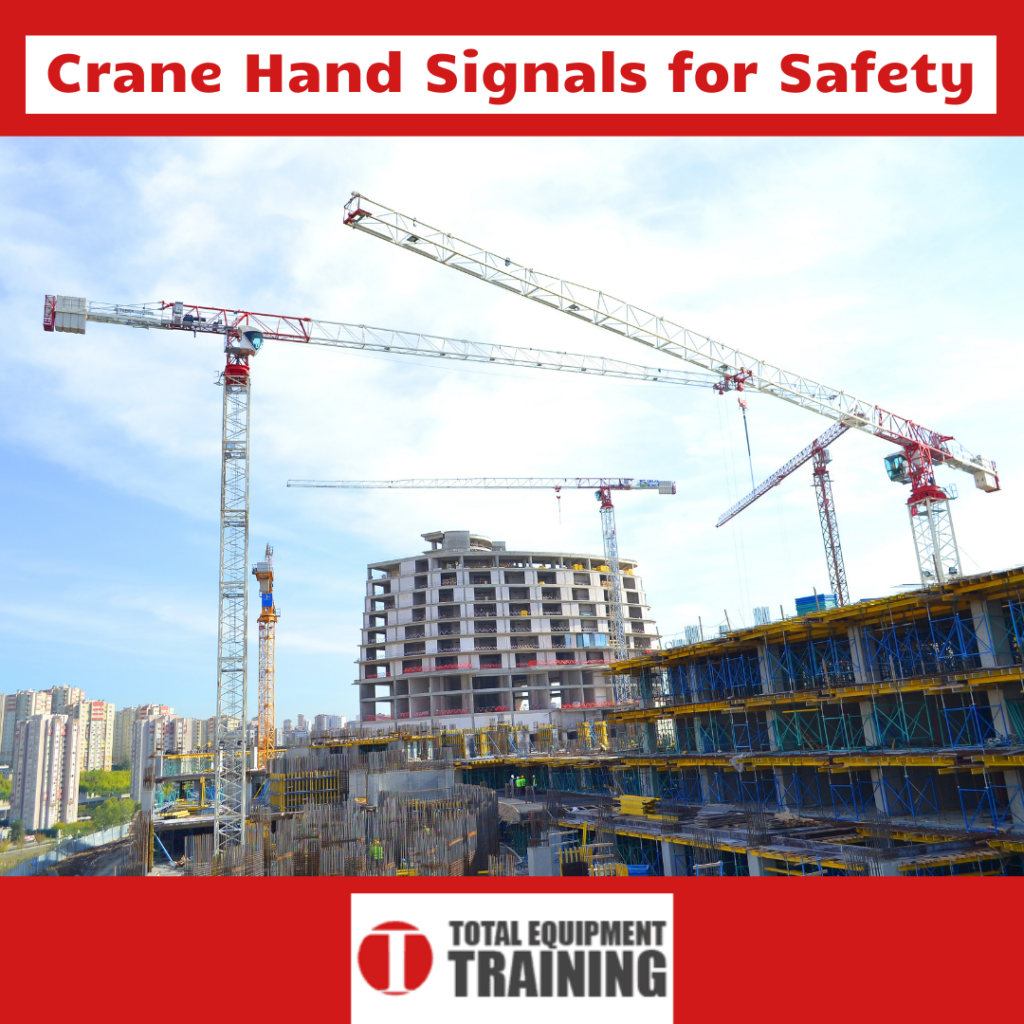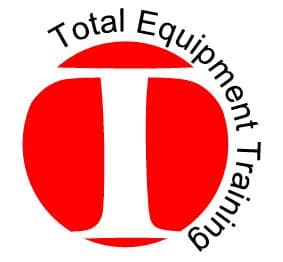
Some of the largest and most powerful machines on Earth are used in the construction industry; the mobile crane is no exception. With great power comes create risks & hazards if the operators are not acting responsibly. When moving heavy loads, lack of proper safety procedures can cause minor or fatal injury.
Total Equipment Training is dedicated to creating safe worksite training for the heavy equipment industry. In this article, TET will provide useful tips on crane operation that could not only boost production, but save lives as well.
Schedule onsite crane hand signal training
Crane Hand Signals for Safety & Crane Operation
From the crane control booth, the crane operator plays their respective role. They may have a general idea of what needs to go where, but that may not be enough. Thanks to the noisy nature of construction sites, it is very inefficient to shout instructions and expect the crane operator to understand and execute them on the first hearing. This need to relay messages has been fulfilled by the creation of several hand signals that can be used to communicate with the operator.
Access CCO Signal Person Resources
What Are the Hand Signals for a Crane Operator?
There are several official hand signals employed in crane operation. They are easy to learn and execute, with basic manuals available from several online sources. The most common ones include:
- Hoist – An instruction to lift the load. The signaler has his forearm vertical with his finger pointing upward. He should then move his hand in a small horizontal circle.
- Raise boom and lower the load – An instruction to raise the main ‘arm’ of the crane, bringing the load closer to the crane’s base, and lower the load. Signaler extends his arm to the side, with his fingers closed and thumb pointing up. The other arm is slightly raised but with the arm pointing down. With his index finger extended pointing down, he makes small circles with his hand. (Used with locomotive/crawler/truck cranes)
- Move slowly – Instruction to slowly carry out a crane operation. The signaler uses one hand to give any motion signal while the other is placed motionlessly in front of the other.
If you are attempting to become an CCO-certified signal person, take Total Equipment Training’s Free CCO Signal Person practice test!
What Type of Hand Signals Should Be Used for Crane Safety?
Essentially, all hand signals have been made to improve safety on the site. There are a few, however, that most of the site crew should know and understand, in case of emergency, or if the signaler cannot communicate with the crane operator. The responsibilities of a signal person include:
- Stop: A signal to cease operation. Fully extend one arm to the side with the palm facing down. Swing the arm in a motion across the chest and back out again to the side.
- Emergency Stop: Similar to the ‘Stop’ hand signal, but with both hands doing the action.
- Dog Everything: A signal to pause crane operation. Executed by clasping both hands together, and holding them above the navel.
If you would like to schedule live training for the signal person at your work site, contact TET today.

Who Can Give Signals to the Crane Operator?
To avoid confusion, crane signals should only be given by the designated signal person. They should be properly trained on all hand signals and their meaning, with practical crane operation experience as a bonus. The crew on site should also be familiar with the hand signals. They can communicate in case of emergency, or able to repeat the signal person’s message if their line of sight is broken. Crane operators themselves need to be very conversant with hand signals in order to understand the messages they are receiving.
Overhead, mobile crane and tower crane hand signals while similar are different. Operators need to know the correct hand signals for the equipment they are operating.
Signals can be by hand, voice, audible or new signals. The Standard Method of hand signals are those covered in ASME B30.5 and are included in our Signal Person Manual. When using non-standard signals, the signal person, operator, and lift director (where there is one) must agree on the non-standard signals that will be used prior to the operation.
New Signals, other than hand, voice, or audible signals may be used where the operator/employer demonstrates that the new signals provide at least equally effective communication as voice, audible or standard method hand signals, or, the new signals comply with a national consensus standard that provides at least as equally effective communication. The signals used and means of transmitting signals to the operator must be appropriate for site conditions.
The ability to transmit signals between the crane operator and the signal person must always be maintained. If that ability is interrupted, the operator must stop operations until signals are re-established. If the operator becomes aware of a safety problem, the operator must safely stop operations and communicate with the signal person. Operations must not resume until the operator and the signal person agree that the problem has been resolved. All directions given to the operator by the signal person are given from the operator’s point of view.

Where Are Crane Operator Hand Signals Found?
The CCO (National Commission for the Certification of Crane Operators) provides nationally recognized official documentation on crane operator hand signals. Total Equipment Training provides these resources as well as onsite training for operators and heavy equipment companies.
Take Our Crane Signal Person Practice Test
Are you concerned for the safety of your construction site or warehouse crew? Interested in testing your competence as a signal person? Total Equipment Training provides numerous resources, such as our free signal person practice tests. It may give you some indication of your skills as a signal person. Additional training and study materials for Signal Person Certification for the CCO Certification Exam are also available.
Contact our support staff for more information.

